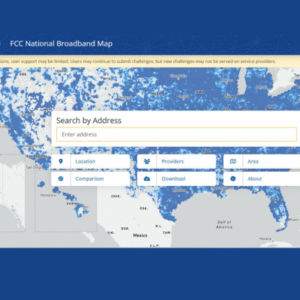2020 Census Participant Statistical Areas Program
As the 2020 Decennial Census approaches, the United States Census Bureau is ramping up preparations. An undertaking of this size requires participation from not only the Bureau itself but partnering organizations and residents across the country. Specific programs the Census Bureau run are intended to help the Bureau understand changing areas in the U.S. by the people who know them best, local organizations and the people who live in them. One such program is the Participant Statistical Areas Program (PSAP). This program allows for input from stakeholder and users of census data to help shape and define the areas and boundaries that are used by the Bureau to count and carry out the Census. No one understands demographic and population shifts better than those who live and work in an area, so participation in the PSAP program is essential for the Census Bureau to have the most up to date and accurate information, which in turns gives us the best possible census data to use.
PSAP Program Overview
The PSAP program invites participants to update and review proposed changes to statistical areas. The Census Bureau will create suggested changes to statistical areas and send them out to participants for review. Participants can then choose to accept or alter the suggested areas. If a participant chooses to alter the suggested, the Census Bureau provides the Geographic Update Partnership Software (GUPS) to make the alterations. This Geographic Information System (GIS) is equipped with the necessary tools to create a new proposed statistical area. These recommendations are then sent back to Census Bureau for approval. The suggested changes will be sent out January of 2019, and participants will have 120 days to submit their updates or approvals. Participants should determine a primary 2020 Census PSAP contact as well determining staffing and budget needs before the approval and editing process begins.
Statistical Areas
A statistical area is a designated section of land grouped into one based on certain criteria. Statistical areas range in size, from huge areas such as the entire United States to small block groups in towns and cities. Borders that are legally set, such as State and County borders are not considered in this program. The program focuses on Census tracts, block groups, Census designated places (CDPs), Census county divisions (CCDs), in selected states. The PSAP program also includes Tribal statistical geographies. These areas include Tribal census tracts, Tribal block groups, census designated places, Tribal designated statistical areas, state designated tribal statistical areas, Alaska Native village statistical areas, Oklahoma tribal statistical areas, and statistical tribal subdivisions. While many of these statistical areas, such as census tracts and block groups, may be easily recognizable to most, some may not be as common.
Census Tracts: Census tracts exist within counties across the country and are used by the Census Bureau to breakdown populations into more manageable groups. Census Tracts contain between 1,200 and 8,000 people, with the optimum number of people being 4,000.
Block Group: Block groups breakdown the census tract designation even further, to allow the Census Bureau and users of Census data to get a more focused look at trends in smaller areas of cities and towns. Block groups can contain between 600 and 3,000 people.
Census Designated Places (CDP): CDPs represent areas that are well known or have name recognition, but are unincorporated into any municipality or place. CDPs don’t have legal boundaries or an active government in place. The Census Bureau does not have a specific number requirement for CDPs, but the area must have a population for three consecutive months during the year.
Census County Divisions (CCD): CCDs represent legally divided areas within counties that have recognizable names. CCDs can encompass multiple communities and combine them into one area. There are no population criteria for CCDs.
Tribal statistical areas have the same logic behind them as standard statistical areas, but are applied to federally recognized American Indian reservation (AIR) as well as off reservation trust lands (ORTL).
Participants
Participants for the PSAP program are first invited to participate based off of the participants in the previous Census’ program. For the 2020 program, those who participated in the 2010 Census’ program will be invited to participate once more. For those who are invited to participate, the Census Bureau encourages them to receive input from other stakeholder and users of census data when approving or making recommendations. For areas where there is no previous partner, the Census Bureau will attempt to reach out and form new partnerships in order to gain sufficient coverage across the country. Those interested in participating in the study that are not reached out to can apply by filling out contact forms on the Census Bureau’s website.
Importance of PSAP
In the 10 years that take place between the decennial census, there can be a huge amount of change and movement across the country. Census data is used for many different applications and is free to use by anyone who may want to. Having an understanding of new trends in measurable categories gives us a better understanding of our country, and to determine where change is needed. Understanding demographics and the issues they face is essential to understanding and solving the problem. Funding allocation and grant applications rely on this data being accurate to properly distribute money to the areas that need it most. The PSAP program allows us to ensure that everyone is accounted for and this crucial data is up to date and accurate.


